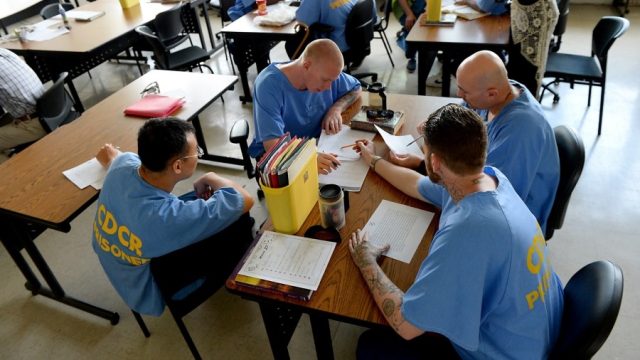
Everyone needs education to live better lives and become responsible members of society. Even more so than for free people, prisoners need a college education for inmates since it not only improves their current circumstances but also prepares them for better lives after they are released and back into society.
The life of a prisoner is transformed through education. With positive and helpful thinking, it functions in their life, much like therapy. The government, nonprofits, for-profit universities, and private groups also give money to prisoners’ education.
Vital Role of Education for Prison Inmates
The government’s investment in educating the convicts is worthwhile since it helps them succeed. Government spending like this lowers crime rates overall. Prisoners would learn responsibility and impart knowledge of the benefits and drawbacks of schooling to youth and local communities.
Prisoner education boosts economic opportunities, lowers crime rates, and decreases government spending on prisons and inmates. An individual may decide between good and evil with the help of education. Prisoners who have received education become aware of their errors and are given the tools to make corrections.
They will understand that they must alter their lifestyle to reintegrate into society. They are better equipped to think positively and make wiser judgments due to college education for inmates. This change in them will lower the crime rate and the likelihood that inmates would commit crimes again or return to their previous lifestyle.
Data of Budget Spending on Prison
The Hamilton Project estimates that in 2010, the United States spent more than $80 billion on corrections, with most of the cost falling on the states. The U.S. Department of Education published a study in 2016 that showed that state and local expenditure on prisons and jails climbed over the course of three decades—from 1979 to 2013—at a rate that was three times faster than investment for pre-K–12 public education.
To put it into perspective, the state of Maryland presently spends around $12,000 each pre-K–12 public education student per year instead of over $37,000 per person in prison. The majority of prison spending in the country is used to house the steadily rising jail population, resulting from the quickly developing American criminal justice system that disproportionately targets low-income individuals of color.
Federal and state governments should put more effort into promoting rehabilitation and lowering recidivism rather than increasing money to sustain high imprisonment rates and housing the expanding prison population. A study by the U.S. Sentencing Commission (USSC) found that within eight years of their release, over half of all federal prison inmates are arrested again. That around half of those rearrested are resentenced to prison.
The same survey discovered that those under 21 who are released from federal prison experience the most excellent rearrest rates of any age group. The percentage of rearrest was highest among those who did not complete high school (60.4%) and lowest among those with a college degree (19.1%). Young people behind bars and kids in school have a higher chance of getting imprisoned again. Still, they also benefit greatly by having access to educational possibilities.
A plausible defense of prison education is that it reduces crime effectively and has long-term advantages for the entire American community. In a survey released in 2016, the RAND Corporation found that those who take part in educational programs of any kind while incarcerated had a 43 percent lower likelihood of doing so again.
Education Might Lower Recidivism
Education may enhance results from one generation to the next and lower recidivism. According to research, children of college-educated parents are more likely to complete their instructions, which can help families advance socially.
Less violence occurs among inmates in prisons that provide college programs, making the atmosphere safer for inmates and prison officials. Improvements in health outcomes, a rise in income, a decline in unemployment, increased political involvement, and volunteerism are just a few of the substantial personal advantages of prison education.
High recidivism also indicates a failure of the criminal justice system, which is made worse by lower educational attainment. Low-educated ex-offenders sometimes find themselves without the financial means or social networks upon release from jail, making them more likely to perpetrate crimes after release rather than reintegrate into society.
Criminal behavior has a severe impact on families and communities. It consumes funds and resources that could be used to take preventative actions to keep people out of jail. Numerous studies show that incarceration has detrimental social, psychological, and developmental repercussions on the roughly 2.7 million children under 18 whose parents are incarcerated.
These detrimental outcomes might include dysfunctional family structures, financial difficulties, a rise in delinquency, subpar academic performance, and even mental illnesses brought on by stress and trauma.
Bottom Line
In conclusion, from a moral and logical standpoint, reducing the expense of prisons by spending money on college education for inmates benefits society the most and guarantees that everyone—regardless of their past—is given a chance to prosper in the future.
